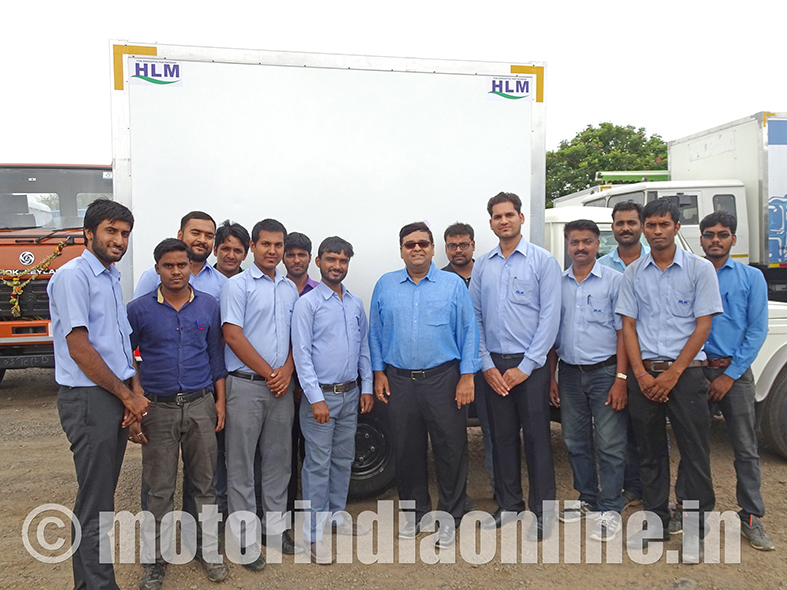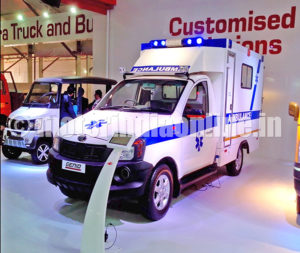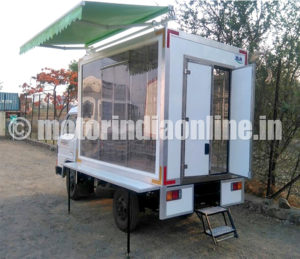Reefer market leader targets 25% growth in FY18
HLM India is the country’s market leader when it comes to supplying highly reliable and quality-crafted reefer boxes for cold chain transport applications. The company has battled various challenges on its way to emerging a clear front-runner in the segment and commands a stronghold in the market today, backed by strong double-digit growth year-on-year. Mr. Siddharth Mishra, MD & CEO, HLM India, talks to us on how HLM India managed to win over customers’ confidence and why the company’s future looks bright and exciting.

Excerpts:
How was business for HLM in India in FY17? What were the major developments and high points during the year?
HLM India did a turnover of Rs. 20 crores in 2016-17, doubling its previous year’s turnover. It was a very fruitful year for us wherein we did a good amount of OEM business. We made our first direct export to Mauritius and subsequently shipped our products to nearly 10 countries in the Africa, Middle East and SAARC regions.
We built new products such as hi-lifts for aircraft catering, retail vans, special purpose vehicles and ambulances and introduced four different types of reefer boxes in the market – traditional GRP, XPS boxes, GRP-MS, XPS boxes, Aluminum boxes, Domex – GRP boxes.
What position do you hold in the pecking order in terms of organized reefer builders across the country? Would you be able to attach a market share figure to the number of reefers you sold in FY17?
Last year we sold 580 reefer bodies, and judging from our discussions with chassis and AC manufacturers, we should be the No.1 player in reefer bodies in the country with around 35 per cent of the organized reefer market today.
We have established dealers/partners in Delhi, Bangalore, Chennai, Hyderabad, Ankleshwar, Jaipur, Kolhapur, Goa and Ludhiana and hope to cover eight more cities in 2017-18.
Keeping in mind that companies like HLM offer better total cost of ownership over the product life cycle, has the market acceptance of your products grown in the last couple of years with the apparent trade-off of higher initial acquisition cost? Are you satisfied with the progress and its pace?
The fact that we are almost doubling the number of boxes we are making every year for the last three years should itself explain the acceptance of our products. The customer today is looking at income versus acquisition.
The total return of investment is crucial. If we offset the initial acquisition cost versus the income and extrapolate it with the EMI, your next acquisition of a chassis/reefer/box could become free if you take the extra income that you make from a HLM box. HLM boxes typically carry 8 to 10 per cent more load in terms of both weight and volume compared to other box manufacturers. So, if a customer earns an additional sum of Rs. 6,000 per trip and makes five trips per month, the additional monthly earning is Rs. 30,000 which is Rs. 3.6 lakhs per year and close to Rs. 29 lakhs in its lifetime. If we take the interest component on the earning every year, then this value becomes almost Rs. 35 lakhs which is higher than the cost of a chassis/AC unit and a box that together cost only around Rs. 30-32 lakhs. So, the next box is paid for and the customer has additional money left for other expenses. The additional Rs. 50,000 – 1,00,000 that customers pay upfront while buying our products is peanuts in comparison to the long-term benefits.
One can never be satisfied. If the big boys of the international market can come and ply their trade in India, then we would see the real jump. Today, we still do not appreciate quality the way we should and the international players could educate the industry better. But any chain is as strong as its weakest link; one employee who has a ‘chalta hain’ attitude will spoil the entire process.
As a country, are we doing enough to promote cold chain transport and enhance the overall cold chain infrastructure? Is the Government’s NCCD initiative paying dividends it should be giving?
We are not doing enough to promote the cold chain transport. There are enough initiatives if you put up a cold storage, but not enough if you are putting up a cold chain transport business.
Further, we talk about the loss the country makes in term of GDP (almost 4-5%) due to rusting, but there are no incentives if we use green material or material that is modern. So, people do not get any incentive to move to better technology and new materials.
The NCCD initiatives are very good, but again they cater more to cold storages than to cold chain transport. There should be a concentrated effort to move certain commodities that are still transported in dry containers in India while they are transported in reefers abroad. This will help us prolong the life of certain products and the same should be promoted. We would like to request NCCD to help us in this regard.
How do you think GST would impact the cold chain sector and also your business?
Our current rate of GST stands at 18% and that should not have any significant impact on our business.
However, the current 18% GST rate is the same as the normal dry container. This should have been lowered for more players to take interest in the cold transport industry as the initial costs are much higher here. So, there is an additional requirement of funds and investment which is around 25 to 40% more in cold chain transport as compared to normal dry transport, hence the tax component is also proportionally higher.
With FY18 all set to go down as a special year in the history of the Indian CV industry, how do you expect to perform this year? What are your targets in terms of sales and financials?
This year has not started off on a good note. First we had the BS-IV ‘exercise’, after which availability of chassis has remained an issue. We had orders but did not have the chassis on which to mount the boxes, and that resulted in our not flying high. June was hit by GST and all purchases were postponed till after GST. These have been the hiccups, but all the actions are for a better, simpler and more prosperous tomorrow. Despite these setbacks, we aim to grow by almost 25 per cent this year.
We also aim to make further inroads into other vehicle bodies like ambulances, retail vans and animal carriers, amongst other applications. We hope to export to the Pacific region and play a role in providing mobile structures for housing in the Middle East. Overall, the future looks exciting.

